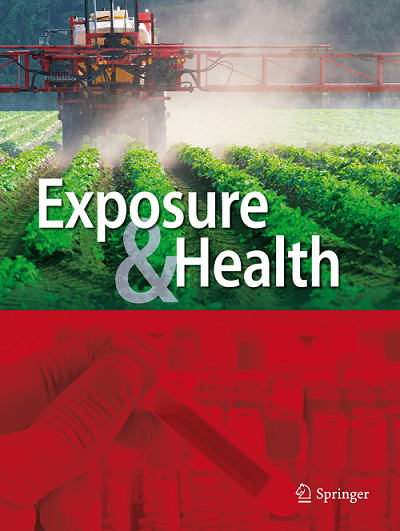综述:非洲手工金矿开采-环境污染和人类健康影响
IF 4.6
3区 环境科学与生态学
Q1 WATER RESOURCES
引用次数: 0
摘要
非洲约有900万手工和小规模金矿(ASGM)工人和生活在ASGM活动附近的人们高度暴露于地质和人为潜在有毒元素(pte)中。尽管ASGM所带来的危害和风险已被很好地描述,但与综合公共卫生研究相协调的多学科环境特征却有限,正如本综述所强调的那样,报告的研究往往是零散的和短暂的。此外,这些研究往往与从整体上尽量减少危害的努力无关。鉴于此,我们通过谷歌Scholar、Science Direct和Pubmed数据库系统地审查了与非洲ASGM相关的人类健康危害的科学文献。1996年至2023年6月,来自30个非洲国家的173篇同行评议论文被确定。102篇同行评议论文报告了毒理学环境危害,特别是砷、镉、CN、铬、汞、铅、可吸入的二氧化硅粉尘和放射性核素。71篇论文记录了人体生物监测基质中接触pte及其相关的健康影响。汞是报告最多的危害。在研究稳健性、监管和政策框架、技术、风险检测、监测和管理方面存在差距。尽管国际和国内都在努力减轻危害,但非洲与非转基因有关的危害正在恶化。这篇综述论文强调需要采取协调行动和多学科合作研究,将分散的孤立研究联系起来,以更好地描述非洲与ASGM相关的相关疾病负担,并在保护公众健康和环境的同时,可持续地最大化ASGM的更广泛利益。本文章由计算机程序翻译,如有差异,请以英文原文为准。
Review: Artisanal Gold Mining in Africa—Environmental Pollution and Human Health Implications
Abstract About nine million Artisanal and Small-scale Gold Mining (ASGM) workers in Africa and people living near ASGM activities are highly exposed to geogenic and anthropogenic potentially toxic elements (PTEs). Despite the hazards and risks posed by ASGM being well characterized, coordinated multidisciplinary environmental characterization with combined public health studies are limited, with often piecemeal and snapshot studies reported, as highlighted by this review. Furthermore, studies are often not connected with efforts to minimize hazards holistically. Given this, we systematically reviewed the scientific literature on human health hazards associated with ASGM in Africa through Google Scholar, Science Direct, and Pubmed databases. One hundred and seventy-three peer-reviewed papers published between 1996 and June 2023 from 30 African countries were identified. Toxicological environmental hazards were reported in 102 peer-reviewed papers, notably As, Cd, CN, Cr, Hg, Pb, respirable SiO 2 -laden dust, and radionuclides. Exposure to PTEs in human biomonitoring matrices and associated health impacts were documented in 71 papers. Hg was the most reported hazard. Gaps in research robustness, regulation and policy framework, technology, risk detection, surveillance, and management were found. Despite international and in-country mitigation efforts, ASGM-related hazards in Africa are worsening. This review paper highlights the need for coordinated action and multidisciplinary collaborative research to connect dispersed isolated studies to better characterize the associated disease burden associated with ASGM in Africa and sustainably maximize the wider benefits of ASGM whilst protecting public health and the environment.
求助全文
通过发布文献求助,成功后即可免费获取论文全文。
去求助
来源期刊

Exposure and Health
Environmental Science-Pollution
CiteScore
13.80
自引率
9.00%
发文量
71
期刊介绍:
It is a multidisciplinary journal focused on global human health consequences of exposure to water pollution in natural and engineered environments. The journal provides a unique platform for scientists in this field to exchange ideas and share information on research for the solution of health effects of exposure to water pollution.
Coverage encompasses Engineering sciences; Biogeochemical sciences; Health sciences; Exposure analysis and Epidemiology; Social sciences and public policy; Mathematical, numerical and statistical methods; Experimental, data collection and data analysis methods and more.
Research topics include local, regional and global water pollution, exposure and health problems; health risk analysis of water pollution, methods of quantification and analysis of risk under uncertainty; aquatic biogeochemical processes in natural and engineered systems and health effects; analysis of pollution, exposure and health data; and more.
 求助内容:
求助内容: 应助结果提醒方式:
应助结果提醒方式:


